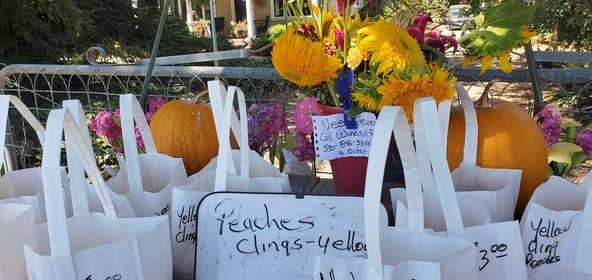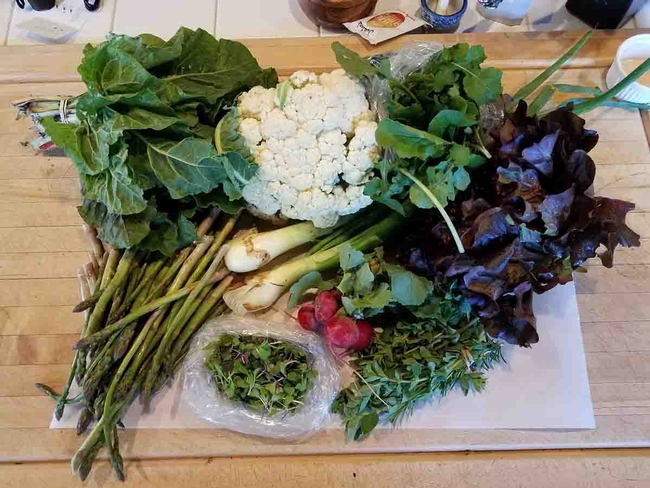We are lucky to live in an area with a number of Community Supported Agriculture (CSA) farms which provide members with fantastic locally-grown vegetables and fruits.

Whatley argued that the club model, as well as pick-your-own farms, would help small, often Black-owned, farms survive. “The clientele membership club is the lifeblood of the whole setup. It enables the farmer to plan production, anticipate demand, and, of course, have a guaranteed market,” Whatley said in an interview with Mother Earth News in 1982 (The Small Farm Plan By Booker T. Whatley – Mother Earth News).

The Indian Line Farm began with an apple orchard which sold shares for cider, hard cider, and vinegar. Jan Vander Tuin had worked and studied at an organic farm near Zurich, Switzerland. He, along with co-founder Robyn Van En, believed that members of the community had different needs and income levels that could be met by selling shares in the produce of the farm.
The Temple-Wilton Farm was founded by Anthony Graham, dairyman Lincoln Geiger, and German émigré Trauger Groh. The farm began with community pledges rather than a fixed price. Members would be shown the cost of running the farm for the year and would then pledge money to support it according to their means and needs.

Of course, by now the CSA movement has spread across the country. Benefits of joining a CSA are numerous. Members are often introduced to new varieties of fruits and vegetables to try. Eating seasonally fresh, local products allows small growers to survive, and family farms to continue production; this not only benefits farm families, but the local economy as well. Local consumers have a direct connection with local growers, building community and trust. Growers can be asked questions about their growing practices and the varieties of plants they choose to grow. Finally, along with their CSA boxes, growers often include recipes for new or unfamiliar varieties of fruits and vegetables.
The cost of joining a CSA varies from farm to farm depending on what's being offered. A CSA box will often save members money because the cost of wholesome, organically-grown food can be high at the grocery store. And many people who purchase shares in CSA's believe that the benefits of eating fresh, locally-grown food far outweigh the cost of membership.

Also, many local growers have farm stands on or near their property. Often simply driving down back roads will reveal a farm stand or pick-your-own (“U-pick”) opportunity. One such U-pick is Boysen Berry Farm in Orland, which grows heritage boysenberries from an original vine developed in 1923 by Rudolph Boysen, the current owner's grandfather.
Supporting local farmers by joining a CSA, buying produce from a farm stand or farmers market, or taking advantage of a local farm's U-pick are sustainable choices with long-term benefits to the environment and the local economy, as well as ourselves and our children and grandchildren.
UC Master Gardeners of Butte County are part of the University of California Cooperative Extension (UCCE) system. To learn more about us and our upcoming events, and for help with gardening in our area visit our website. If you have a gardening question or problem, email the Hotline at mgbutte@ucanr.edu or leave a phone message on our Hotline at 530-552-5812. To speak to a Master Gardener about a gardening issue, or to drop by the MG office during Hotline hours, see the most current information on our Ask Us section of our website.